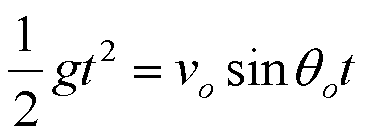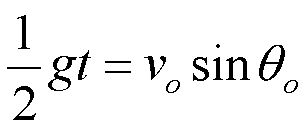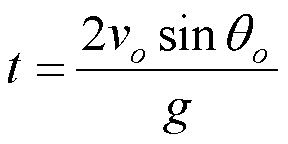We then substitute this value of t
into our position in x equation and do some algebra:


combine the vo terms
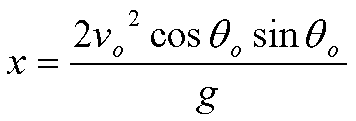
apply the following trigonometric identity

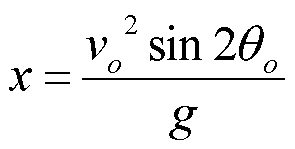
The final equation is that for the range of
the projectile. Notice that if initial velocity is held constant
the range will only vary with the angle. So this range will be a
maximum when the sine of two theta is a maximum. Since sine goes
between one and zero we want the sine of two theta to equal one and this
occurs when theta is 45 degrees. So one can achieve maximum range
by shooting a projectile at 45 degrees. Other angles above or below
45 degrees will result in lesser ranges. Also note that because of
this fact, I can obtain the same range with two different angles:

Same Range from two Different Angles
 Peak
Height of a Projectile
Peak
Height of a Projectile

Return
To Introduction


